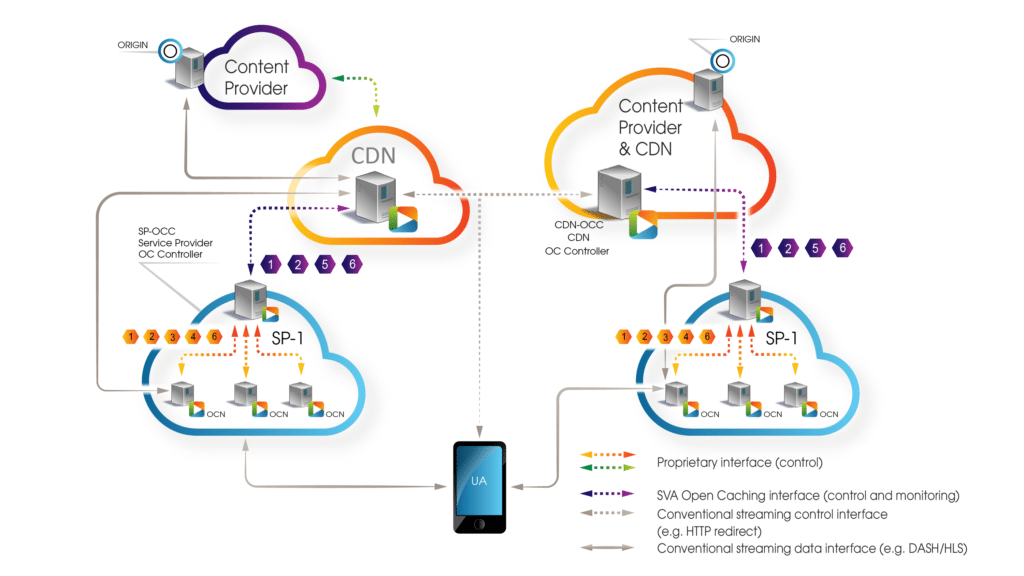Understanding Open Caching
- Home
- SVTA Understanding Open Caching
Understanding Open Caching
An Open Architecture for Content Delivery
Open Caching is ultimately about flexibility. By standardizing how requests for content are handled, content delivery gets decoupled from proprietary solutions enabling discrete networks involved in delivering content to act as a single network. This, in turn, improves management of the content delivery infrastructure (for content owners) while better involving eyeball network operators (ISPs) in the delivery chain. This, in turn, creates an “overlay” network called an Open Caching Network. Because the interfaces for managing this overlay network are APIs adhering to industry standards, new, programmatic workflows can be used to manage content delivery end-to-end.

Key Terms
Open Caching has its own lexicon. Understanding the terms will improve your understanding of how it works and the various components required for operation. Note that these terms are pulled from the SVTA Streaming Video Wiki.
Specifications and Documents
The following specifications and other documents can help you better understand the fundamentals of an Open Caching Network, architecture, APIs, and implementation.
SVTA2026: Home Storage Functional Specification
The Home Storage Open Caching Node (HS-OCN) project adds functionality to the open caching system to further improve quality of experience (QoE) on networks with last mile challenges including speed limits (e.g. low speed DSL), usage limits (e.g. wireless), and last mile congestion (e.g. COVID quarantine). In the United States, almost 20 million households still have DSL or wireless Internet service. This number is larger worldwide. By leveraging storage in the home, end-users can have experiences with fewer rebuffer events, faster start times, and higher visual quality including UHD. At the same time as the QoE is improved, the amount of content which can be viewed is increased because the operator can reduce the peak period usage.


